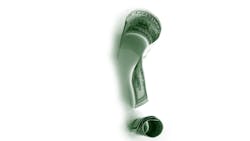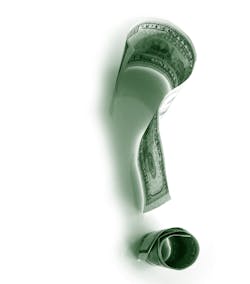Staff Rx: Common questions when developing a commission-based compensation plan for dental hygienists
Dear Dianne,
You have given me great advice in the past on numerous topics, and my hope is that you can steer me in the right direction again. I have been given the task of developing a hybrid commission-based salary plan for the hygiene department. The only problem I am running across is finding someone who can help me figure out how this plan is best structured. Here are several questions that I hope you can answer:
1. How do RDHs get paid for holiday, sick, and vacation on the straight-commission model? Or are they not paid?
2. As far as incorporating a base wage, say $200 minimum pay should the schedule fall apart on any given day, is it unreasonable to have RDHs stay and work on other projects? I understand that the department of labor states that employees should be paid at least minimum wage. Therefore, when using this model of compensation, would an RDH leave the office for the time that they are not seeing a patient and return if there is one later in the day?
3. This hybrid model of a promised base wage ($200 for the day) or commission, whichever is greater, seems like a win-win since raises are built-in yearly when there is an increase in annual fees. Yet, with this model, can the hygiene department still earn a bonus so that other nonproducing employees have some incentive to continue to work as a team?
4. Should the 30–35% production commission be based on our fee or be done once write-offs are factored in? Say a hygienist produces $110 (prophy) + $80 (4bwx) = $190, would the RDH earn commission on these numbers or after write-offs (exam fee is currently considered DDS production)?
Jackie, RDH and office administrator
Dear Jackie,
Thanks for writing. Compensation questions are among the most common questions I receive from hygienists across the country, and I’ll offer my thoughts.
1. It depends. In most situations where I’ve consulted, hygienists on straight commission of at least 33% of gross production do not receive additional compensation via benefits. My experience is that most are OK with that arrangement. Often, they have a spouse who has health insurance (the big perk), and the compensation is so good that they are happy. However, if management decides on a “tighter” strategy, i.e., smaller commission and/or paid after write-off amounts, then hygienists should get additional pay via benefits. If a hygienist is working on straight commission, it is possible to determine what the average daily wage is by adding the total pay over a period of time, say three months, and dividing by the number of days (or hours) worked. Any paid vacation could be calculated using the average.2. Great question. If you are guaranteeing a base pay (and I think you should), that amount can be broken down into an hourly wage, which would satisfy federal requirements (DOL) for pay for work if it’s at least minimum wage. This is a good idea from three different angles: it fosters teamwork when hygienists can help in other areas; it keeps them in the office in case there’s an opportunity to fill the spot; and it avoids that slippery slope of sending them home, then asking them to return later. I find that scenario to be disrespectful of hygienists’ time, and according to Tim Twigg of Bent Ericksen & Associates, it’s probably illegal.1
If you decide to go with a straight commission model, each hygienist will be paid a percentage of the production she/he generates. However, another option is to pay a base amount plus commission on any production that exceeds the production goal. For example, let’s say the production goal is $1,200 per day. On day one, the hygienist produces $1,500, which is $300 over the production goal. So, her/his commission would be a percentage of the excess. If the commission percentage is 25%, she/he would earn an additional $75 for that day (25% of $300). If the hygienist’s base is $240 ($30/hour), she/he would earn $240 + $75 = $315 for the day. With this model, it is necessary to determine the average daily production by looking at a three-month time span (preferably pre-COVID). Divide the total production by total days worked. I recommend you set the production goal slightly above that amount. When fees are increased, the production goal should be increased as well. The production goal should be reevaluated quarterly to make sure it is neither too low, nor too high.
3. Another great question. Typically, if hygienists are working on a straight commission model, they do not participate in the office bonus. However, the goal of a bonus system is to reward employees for going above and beyond, and hygienists should be part of that success. I do not like any bonus system that doesn’t reward everybody; after all, months with great production only come about because of team effort.
Before implementing a bonus system, business owners should evaluate the facts about bonuses. I wrote an article on bonus systems for RDH that addresses the facts and fallacies.2
4. This is such a difficult question, but I’ll give you my best answer. Owners make business decisions that don’t involve staff members, even though such decisions often affect staff pay in a significant way. Some offices sign up with every plan—good or bad—and the write-off amount can be huge. In some worst-case scenarios, I have consulted with offices that are writing off up to 35% of everything they do. Often, doctors know they work very hard and have little to show for it. Some doctors buy practices that are deep into PPO dentistry without understanding the impact PPO dentistry can have on their ability to be financially healthy. Believe it or not, some offices do not track their write-off amount. They will often use multiple fee schedules, which makes tracking write-offs impossible.
That being said, there’s huge variability regarding offices and the amounts they write off. My rule of thumb is this: generally, an office can be financially healthy if it can keep its write-off below 10%. That means limited participation in PPO dentistry, which is easier for some practices than others. Some areas of the country are saturated with PPO plans; some areas have very little. My ideal practice would have little to no write-offs, but “ideal” is not always possible.
So, to answer your question, here’s what I recommend. If the PPO amount is less than 10%, then hygienists should be paid on gross production, not including the doctor exam. If the PPO write-off amount is between 10% and 20%, hygienists should be paid on collections, with half the doctor exam fee being applied to their production. If the PPO write-off is above 20%, hygienists should be paid on collections, including the full doctor exam.
Another option for hygienists being paid on collections rather than production is to pay a higher percentage than the 33% industry standard.
One thing that’s important to stress when implementing commission-based pay for hygienists is that hygienists working on commission are not happy if their schedules are not kept full. So, maintaining and working the hygiene schedule has to be one business assistant’s primary duty. The business desk is the nerve center of the practice, and every successful dental practice that I’ve ever had the privilege of assisting has good organization at the business desk. Each person should have a well-written job description with primary duties delineated. Consultants worth their salt know that chaos is typically the order of the day when three business assistants attempt to do the same thing. I have a key question that I always ask when working with a multiple- employee business desk: “Tell me, whose job is it to plug holes that occur in the hygiene schedule?” If they look at one another and say, “Well, we all try to do that if we have time,” then I know the hygiene schedule will suffer. That’s not the right answer, but far too often, that’s the priority that hygiene scheduling receives. The reality is that if hygiene is not kept full, the doctor’s productivity will suffer, since most restorative work is diagnosed and scheduled through hygiene visits. Tracking downtime is important, and depending on how much downtime you have in hygiene, it may be necessary to set some guidelines in place to keep downtime to a minimum. For example, if downtime is currently 20%, the goal should be to reduce that to 10%. Ideal downtime is 5% or less. My RDH article entitled “Measuring downtime” can be referenced for more information.3
I hope these tips will help you as you consider implementing a commission-based model for your hygienists.
All the best,
Dianne
References
- Caution: A common policy may need to be avoided. Bent Ericksen & Associates. https://bentericksen.com/2018/01/17/caution-common-policy-may-need-avoided/
- Watterson DG. Bonus plans. RDH magazine. October 10, 2019. https://www.rdhmag.com/career-profession/article/14068390/bonus-plans
- Watterson DG. Measuring downtime. RDH magazine. October 11, 2013. https://www.rdhmag.com/career-profession/article/16406438/measuring-downtime
DIANNE GLASSCOE WATTERSON, MBA, RDH, is a consultant, speaker, and author. She helps good practices become better through practical analysis and teleconsulting. Visit her website at wattersonspeaks.com. For consulting or speaking inquiries, contact Watterson at [email protected] or call (336) 472-3515.
About the Author
Dianne Glasscoe Watterson, MBA, RDH
DIANNE GLASSCOE WATTERSON, MBA, RDH, is a consultant, speaker, and author. She helps good practices become better through practical analysis and teleconsulting. Visit her website at wattersonspeaks.com. For consulting or speaking inquiries, contact Watterson at [email protected] or call (336) 472-3515.
Updated June 30, 2020


